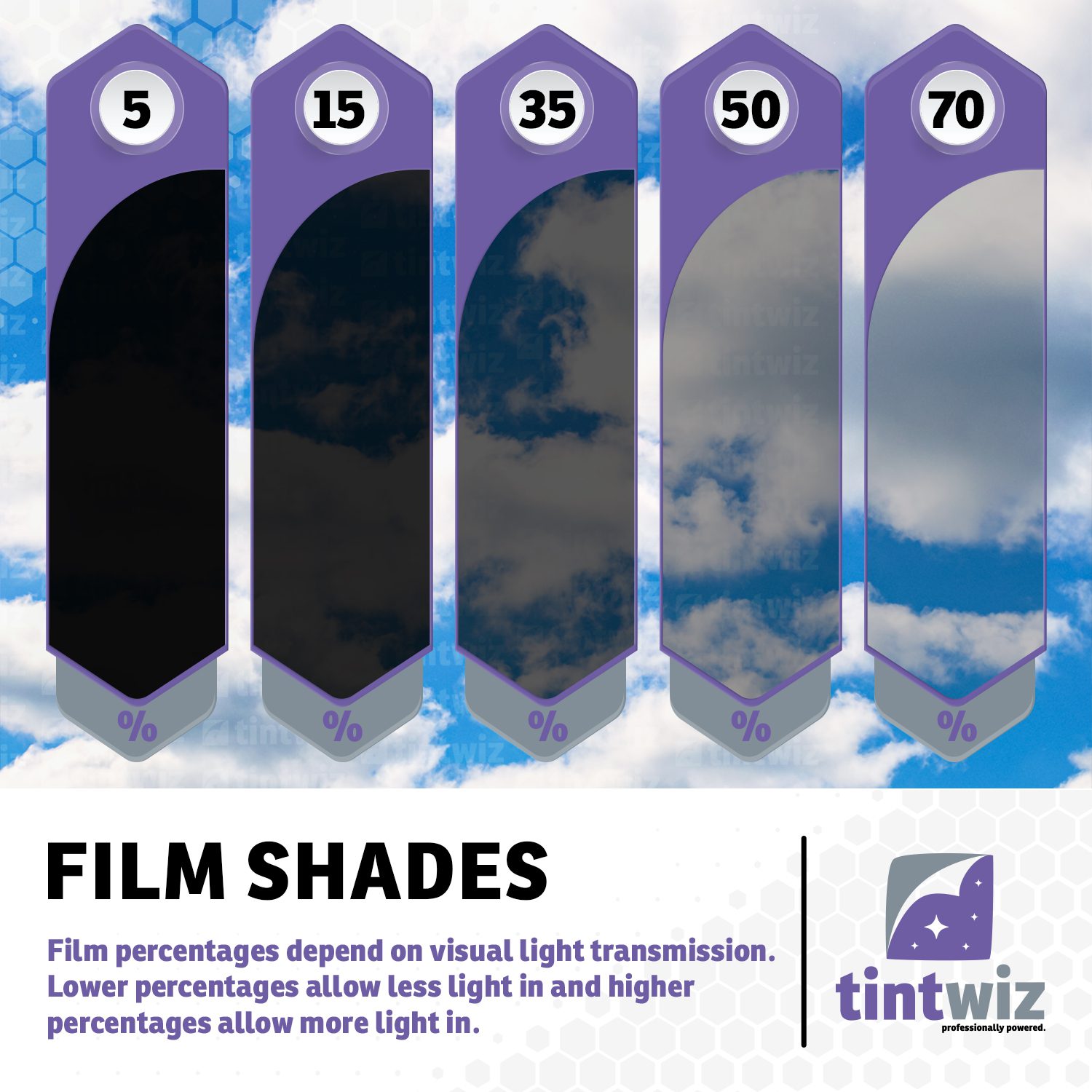Darkest legal tint for Cars in Missouri
- Windshield: Non-reflective tint is allowed above the manufacturer’s AS-1 line.
- Front Side windows: Must allow more than 35% of light in.
- Back Side windows: Any darkness can be used
- Rear window: Any darkness can be used
Darkest legal tint for SUV and Vans in Missouri
- Windshield: Non-reflective tint is allowed above the manufacturer’s AS-1 line.
- Front Side windows: Must allow more than 35% of light in.
- Back Side windows: Any darkness can be used
- Rear window: Any darkness can be used
Please note: The accuracy, completeness, adequacy or currency of the content is not warranted or guaranteed. We are not lawyers or a law firm and we do not provide legal advice. We recommend you consult a lawyer or other appropriate professional if you want legal advice.

The state of Missouri first enacted vehicle window tint rules in the year 2002 and the same laws passed then are still in place and largely unchanged. But as the auto window film market has developed and changed in myriad ways since then, it’s important that you take care to use window tints that are still within the purview of Missouri tint laws given that many window film products now in use were not even available some two decades back.
The latest car window tint advancements include products like nanoceramic window film, a nonmetallic window tint wherein hundreds of thousands of microscopic ceramic bits are infused into thin but amazingly strong sheets of film. Nanoceramic window film can block up to 50% (or more with some products) of the sun’s hot infrared light, keeping a car cooler and more comfortable, and this and other window tints can reject more than 99% of the sun’s damaging UV light, stopping interior fading and cracking and thus preserving your car’s value and also protecting your eyes and skin from sun damage.
Car window tint also stops the harsh glare of sunlight from making driving less safe, thus protecting you and your passengers and your fellow motorists. And then of course there is the privacy and style window tint can add to your car. Despite all the many benefits of car window tinting, it is the darkness of the tint that authorities tend to focus on, with darkness being rated by the visible light transmission, or VLT, percentage of the tint. Thus we will break down Missouri VLT restrictions in detail so you can make sure your auto window tint is legal in the state and be sure you are enjoying all the benefits of auto window tint without risking a window tint ticket in Missouri, a violation that can cost $75 per infraction.
Visible light transmission simply refers to the amount of light a tinted window lets pass through, and the higher the number, the less tint is present and the more transparent the window. A 100% VLT pane of glass is fully transparent, therefore, while 50% VLT blocks half of the sun’s visible light. The lower the VLT, the harder it is to see through the window and the more privacy the tint adds.
Missouri Window Tint Rules for Cars, Trucks, SUVs, and Vans
Unlike you find in almost every other state, Missouri window tint rules for cars are the same as tint laws for larger vehicles (meaning sport utility vehicles, vans, and trucks), so all privately owned motor vehicles are subject to simple, easily understood rules.
Missouri tint laws allow for windshield tint down to the manufacturer’s AS-1 line, which is a demarcated strip about five to six inches below the top of the front windshield. (If no AS-1 line is visible, use five inches as your guide.) Windshield tint cannot be at all reflective.
All vehicles registered in Missouri may have window tint on the front side windows as dark as 35% VLT, which is more than dark enough to add privacy and to enhance the looks of the car. The rear side windows may be of any darkness, even down to a fully opaque looking blackout privacy tint. This is also true for the rear window (AKA rear windshield) which may be of any tint darkness, but note that Missouri tinting laws call for dual side mirrors if any tint at all is placed on the rear windshield.
No window tint on any side or rear window of a vehicle in Missouri may be more than 35% reflective, and no colors of window tint are currently banned in the state.
For reference, Missouri’s window tint laws are much more permissive than those found in most states, with darker tinting allowed than in many places, more reflectivity (which can enhance vehicle style and reject more solar energy) and given that all tint colors are allowed.
Missouri Window Tint Specifications and Other Rules
Manufacturers, retailers, and installers of car window tint in Missouri are not required to certify that the window film products they offer in the state meet with state regulations: that onus is on the motorist owning and operating the vehicle. And as stickers identifying window tint as legal in Missouri are not required, proving tint meets or violates tint law must be completed using devices at the disposal of police and inspectors, who can test tint darkness at any time during a traffic stop or vehicle inspection and may assess a fine of up to $75 for any window found to be in violation. These fines can be elevated for repeat infractions, rapidly surpassing what you would simply pay to get legal window tint applied to the vehicle in the first place.
However, do note that Missouri law allows for a 3% variation to tint darkness, so that even if your car has 32% VLT tint on the front side windows, you will still not be ticketed. Don’t try to push your luck with this variance as the law is already permissive and as illegal window tint can so easily be detected. However, tint law in Missouri also allows for medical exemptions, so if you feel you need darker tint than allowed by the rules for health purposes, speak to a healthcare professional about getting a dispensation for darker tint.
Darker window tint can help mitigate health issues like glaucoma or eye fatigue issues, it can reduce the frequency and severity of migraines experienced while driving in the sun, and it can protect your skin against sun exposure, a critical benefit especially for people at elevated risk for skin cancer.
Missouri car window tint laws are in place to ensure all drivers have the best and safest experience on the roads while also allowing for the safety of law enforcement personnel who may need to approach vehicles and need to see into the cabin. By following car window film laws you do your part to keep the state a safe place to drive.









